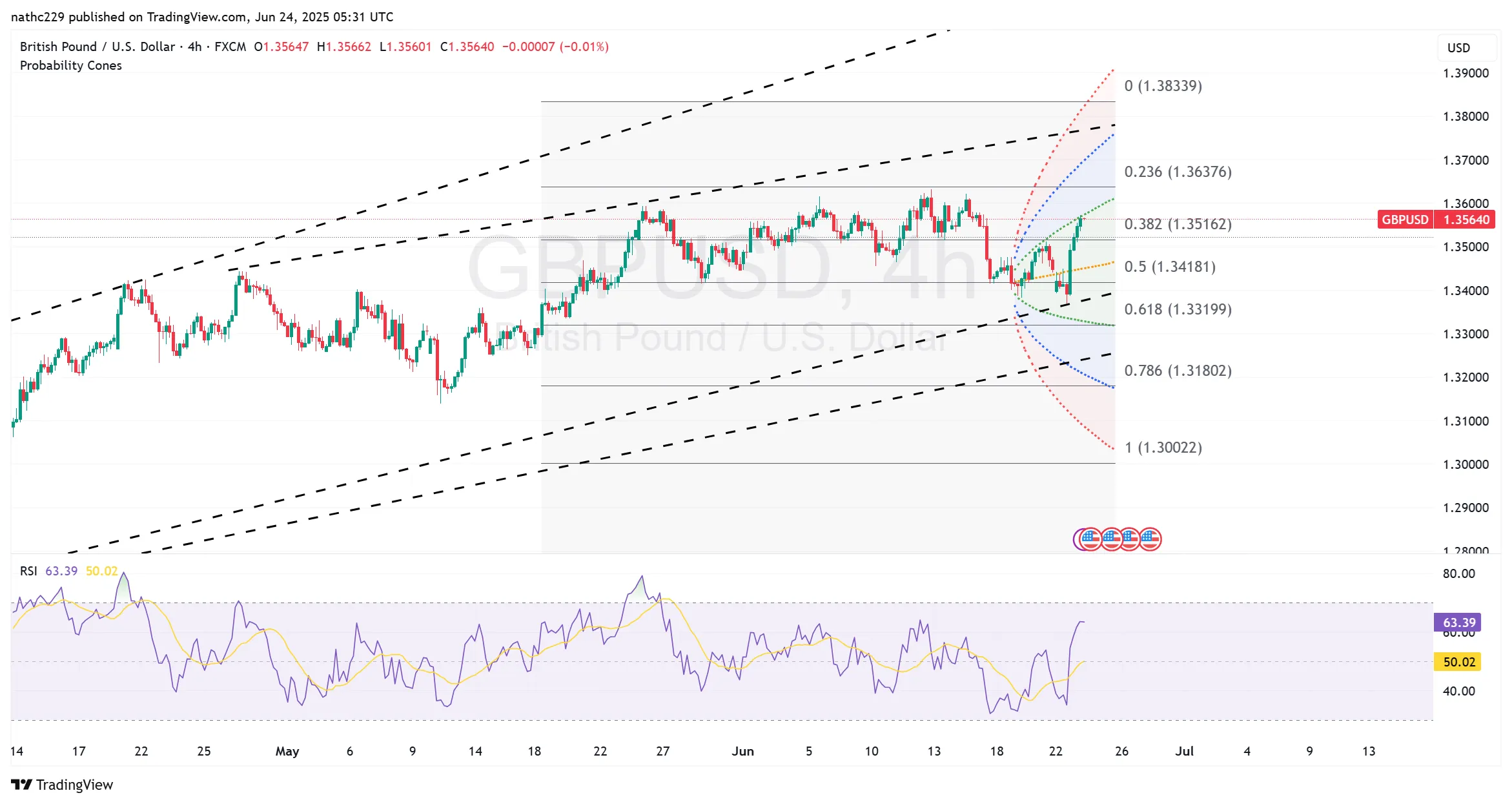
GBP/USD Advances Amid Dovish Fed Signals and Limited Geopolitical Impact
GBP/USD Advances Amid Dovish Fed Signals and Limited Geopolitical Impact
GBP/USD has shrugged off initial geopolitical tensions following Iran’s missile response to U.S. military strikes, demonstrating resilience amid a shift towards dovish signals from key Federal Reserve officials. Despite heightened geopolitical risks, market reactions have remained relatively contained, allowing cable to reclaim key technical levels and providing an opening for further short-term gains.
Technical Analysis
GBP/USD marked a significant technical breakthrough, rising above key resistance provided by the 200-hour moving averages between 1.3480 and 1.3506. This bullish penetration indicates renewed market optimism and suggests potential continuation towards higher resistance levels, notably around 1.3600 and the recent high of 1.3633.
Supportive levels have solidified at the 1.3480 region, backed by the ascending 200-hour moving average. This technical alignment reinforces the short-term bullish outlook, while a failure to hold these gains could lead to retesting lower support zones, specifically around the 21-day moving average currently at 1.3440.
Momentum indicators such as the Relative Strength Index (RSI) and Moving Average Convergence Divergence (MACD) also lend credence to the bullish case, displaying strengthening momentum with room for further upside before entering overbought territory.
Geopolitical and Market Factors
GBP/USD’s recent resilience is notable given the geopolitical context. Markets initially braced for significant volatility following Iran’s missile response to the U.S. airstrikes targeting nuclear sites. However, the relatively measured nature of Iran’s response—particularly avoiding actions such as closing the strategically crucial Strait of Hormuz—has allowed markets to absorb geopolitical shocks without severe disruptions.
The immediate market reaction saw a notable decline in oil prices as initial panic subsided, further aiding broader risk sentiment. Equities also continued to climb, reflecting investor confidence despite lingering geopolitical uncertainties. The market appears increasingly convinced that the recent escalations, while serious, do not fundamentally alter the global economic outlook at this stage.
Nevertheless, caution remains necessary, as headline risks associated with ongoing Middle Eastern tensions persist. Any unexpected escalation or a more forceful Iranian response could rapidly alter the current market equilibrium, reintroducing volatility into FX markets, particularly for pairs like GBP/USD.
Central Bank Dynamics
Central bank policy dynamics have played a pivotal role in shaping GBP/USD’s trajectory. The latest dovish remarks from typically hawkish Federal Reserve policymakers Michelle Bowman and Christopher Waller significantly altered market perceptions regarding future U.S. monetary policy. Bowman’s unexpected openness to a potential rate cut as early as July (with market odds currently priced at 22%) represents a meaningful shift towards accommodative monetary policy.
This dovish pivot from the Fed contrasts slightly with the Bank of England’s cautious stance. Recent UK PMI data revealed modest improvements in headline indicators but continued underlying weakness, particularly in employment indices and output prices, which have declined to levels last seen in February 2021. This economic backdrop leaves open the possibility of the BoE accelerating its easing cycle, potentially bringing forward anticipated rate cuts from August to September.
The potential divergence in monetary policies between the Fed and the BoE, however subtle at this stage, could further influence GBP/USD movements. Traders will closely monitor upcoming communications from both central banks, especially around future rate-setting meetings, to gauge potential shifts in policy direction.
Economic Indicators
Recent UK PMI data provided mixed signals. While headline figures showed modest improvements, underlying details continue to reflect economic fragility, notably within the employment sector, which remains in contraction. Declining output prices also underscore subdued inflation pressures, complicating the BoE’s monetary policy calculus.
